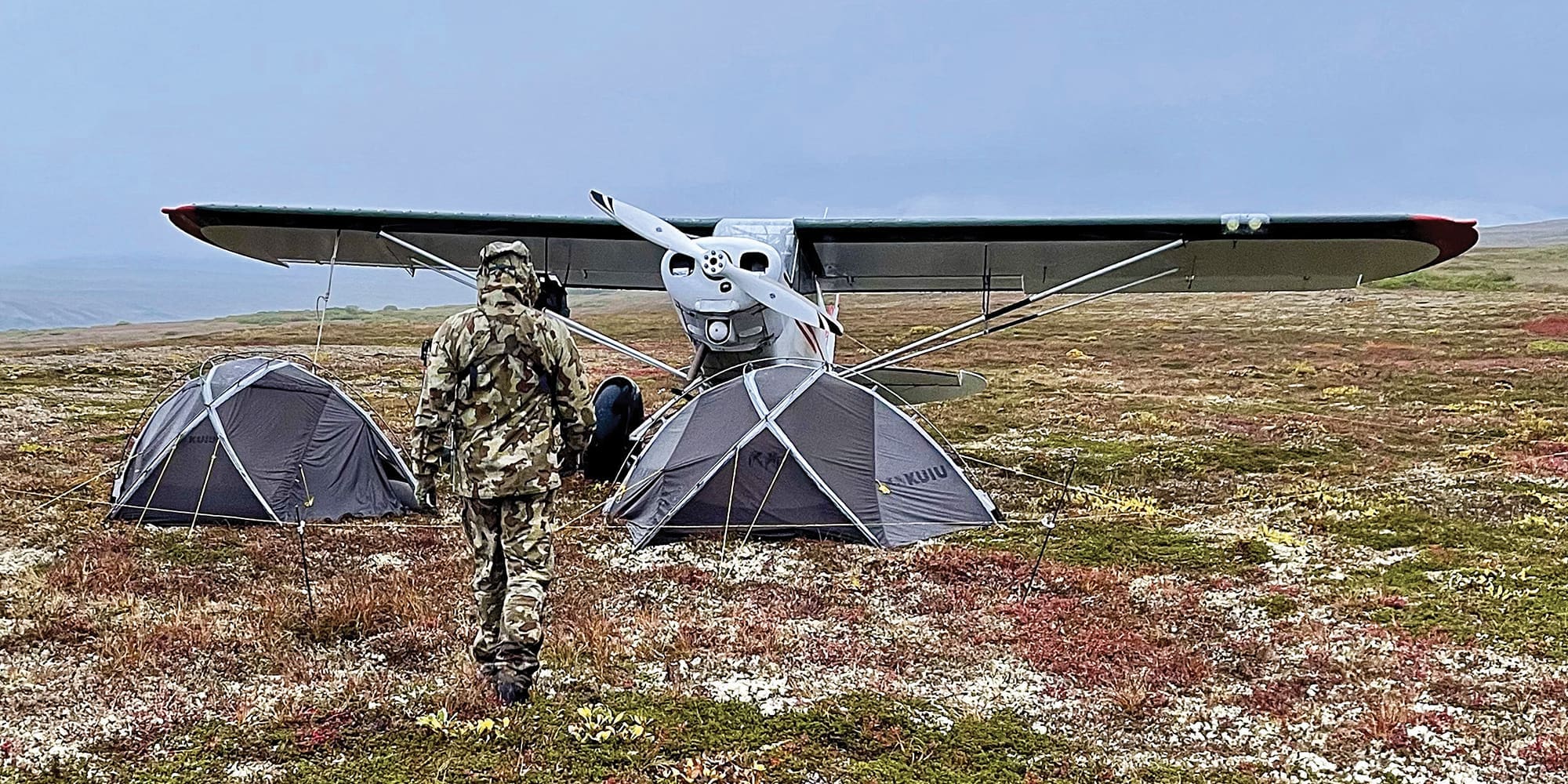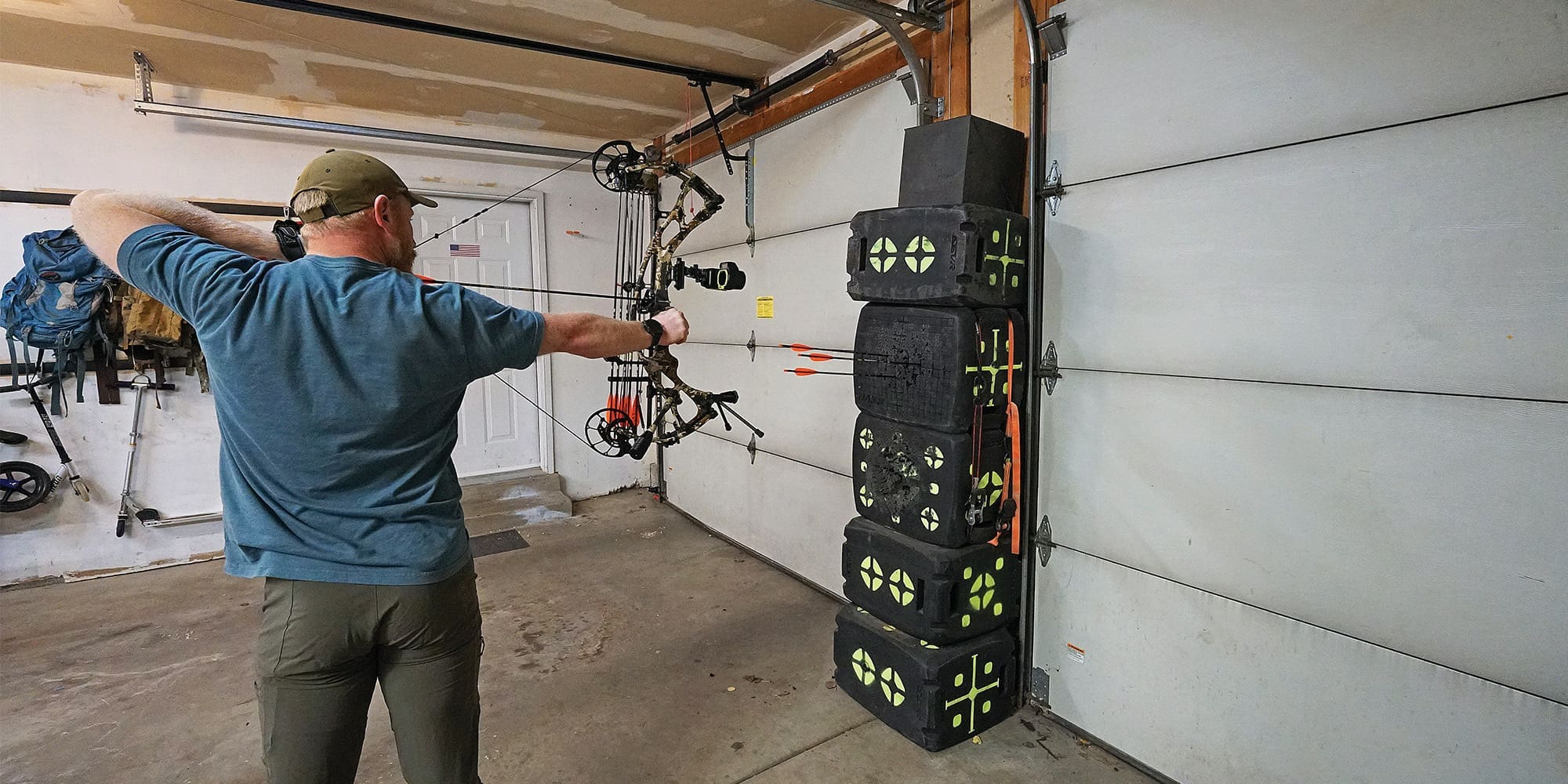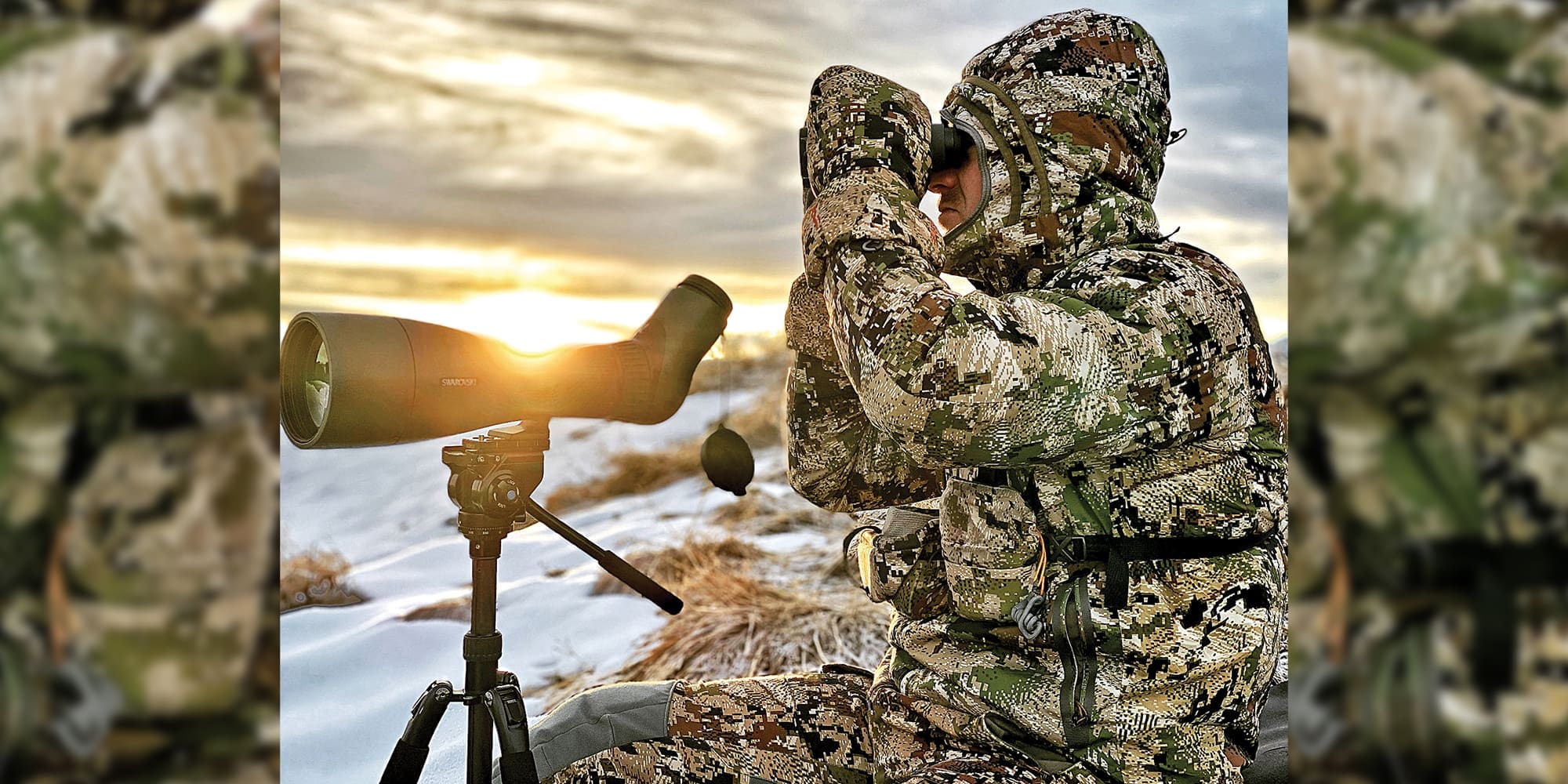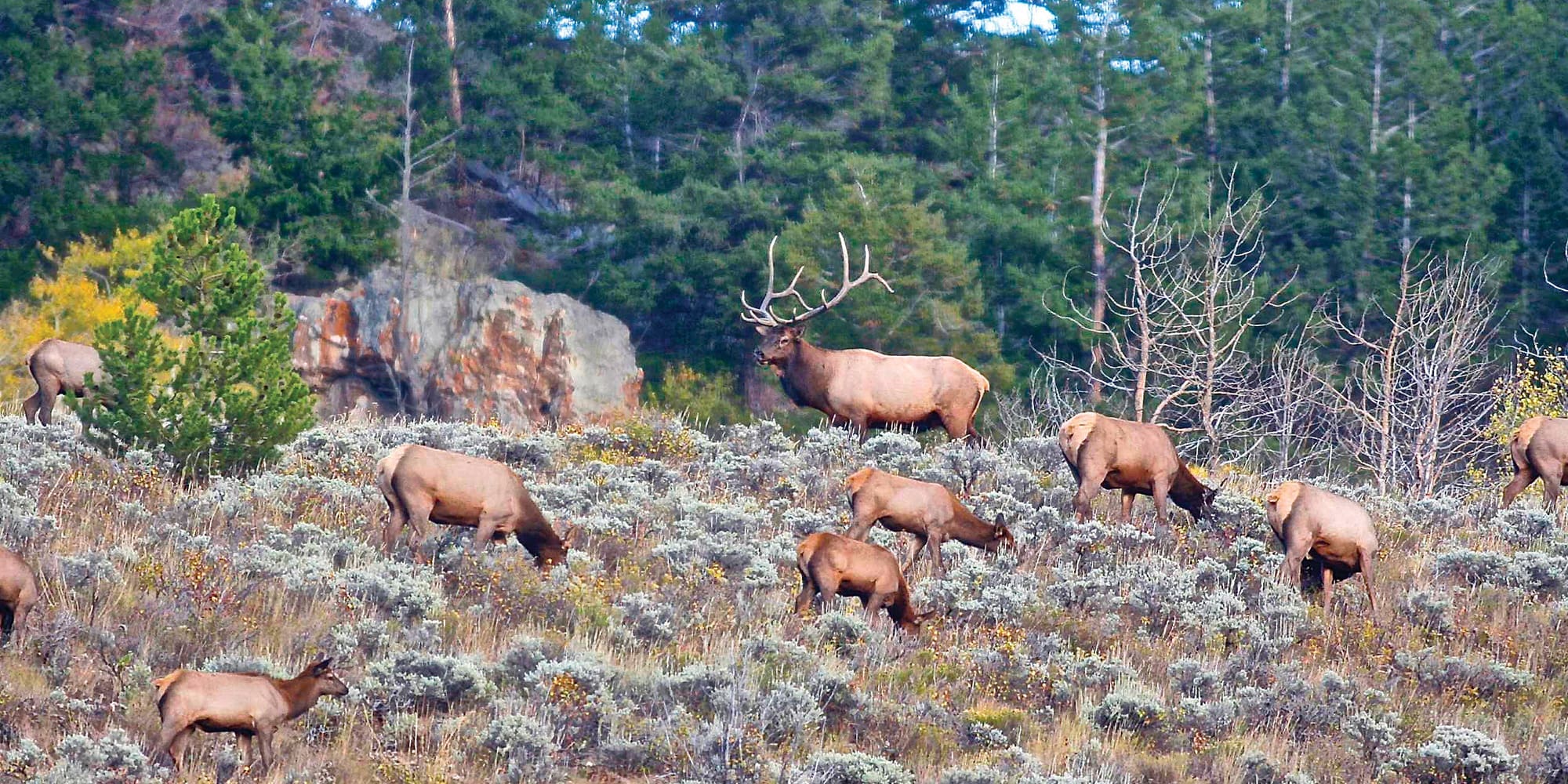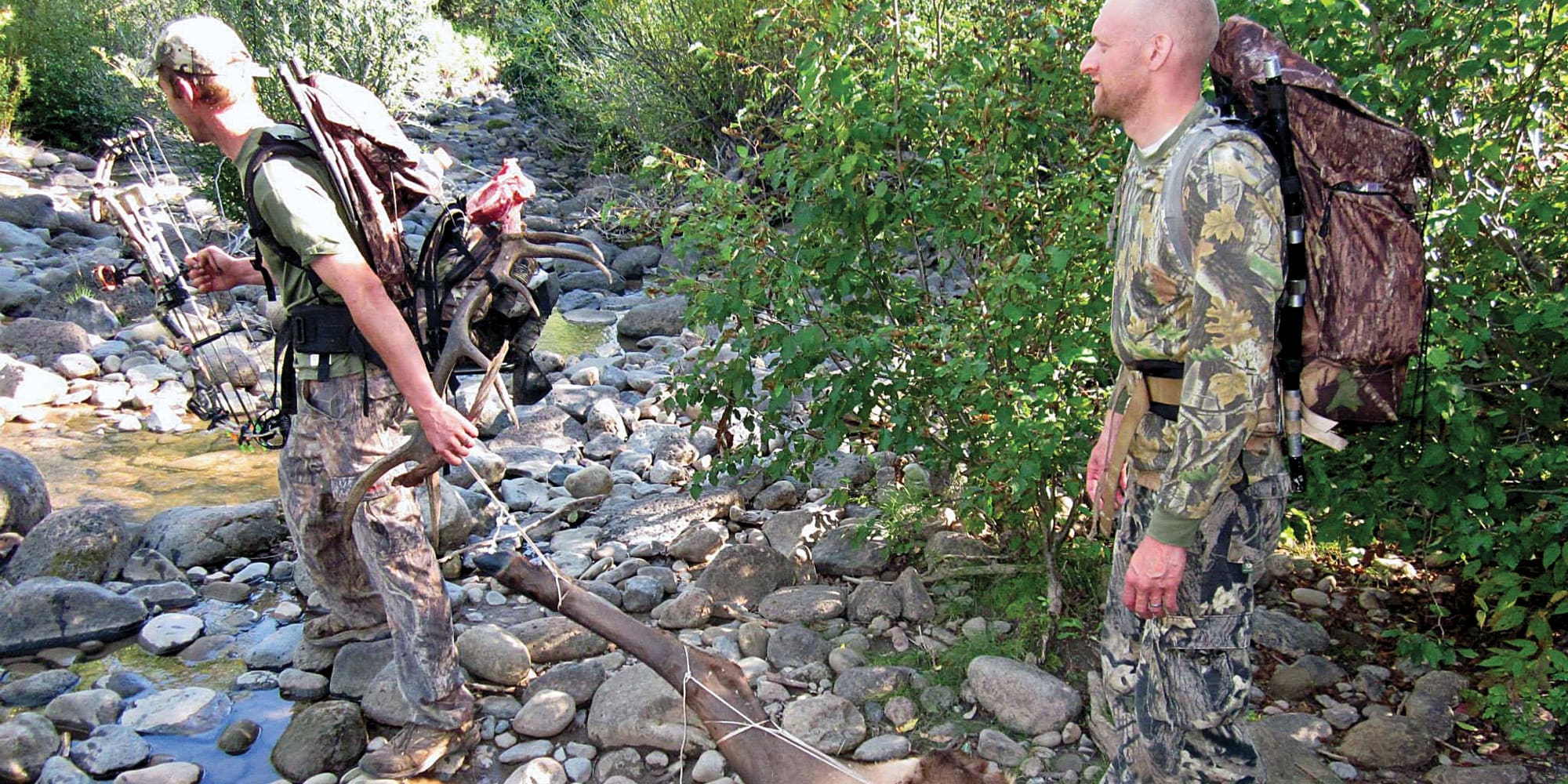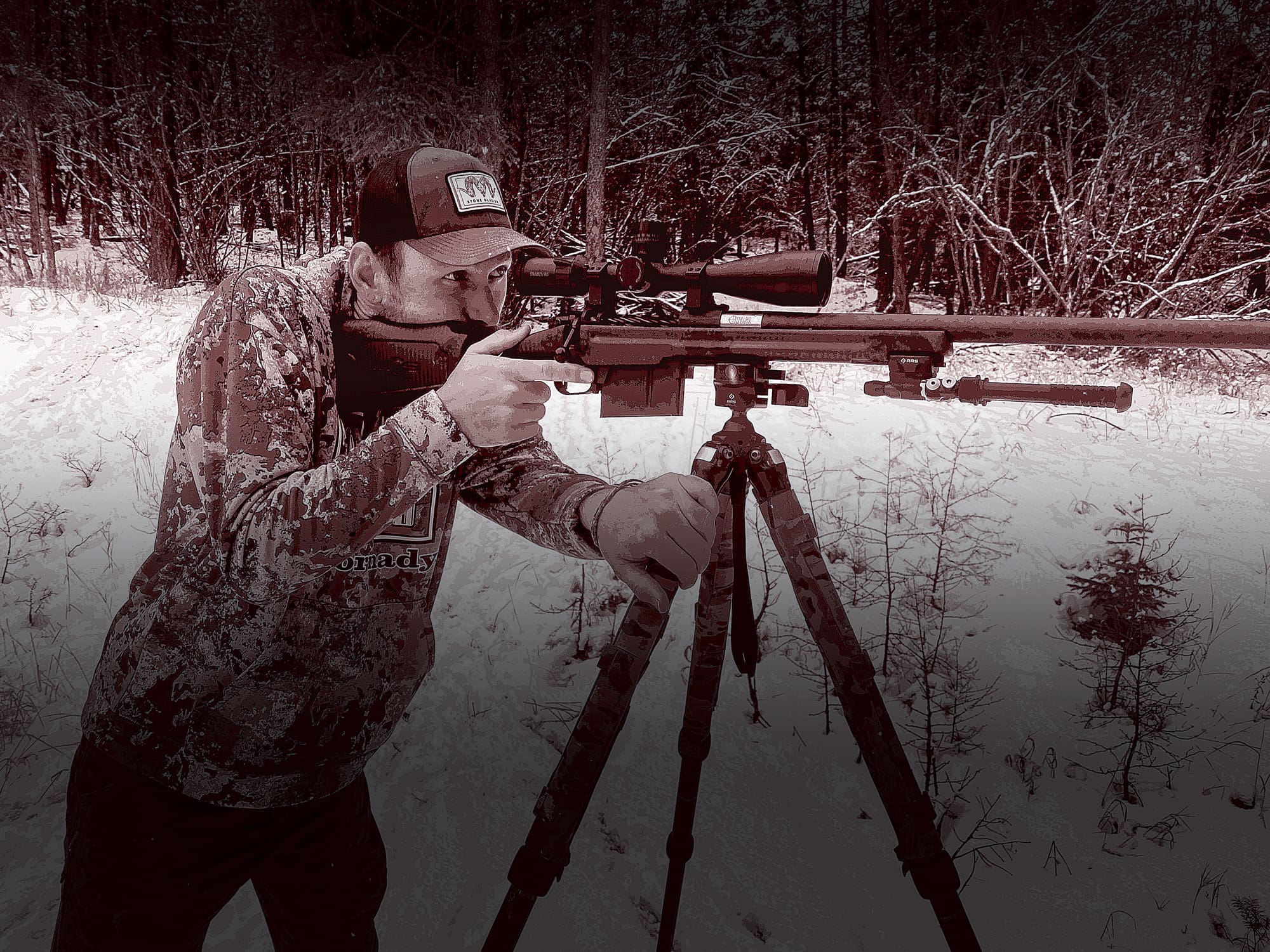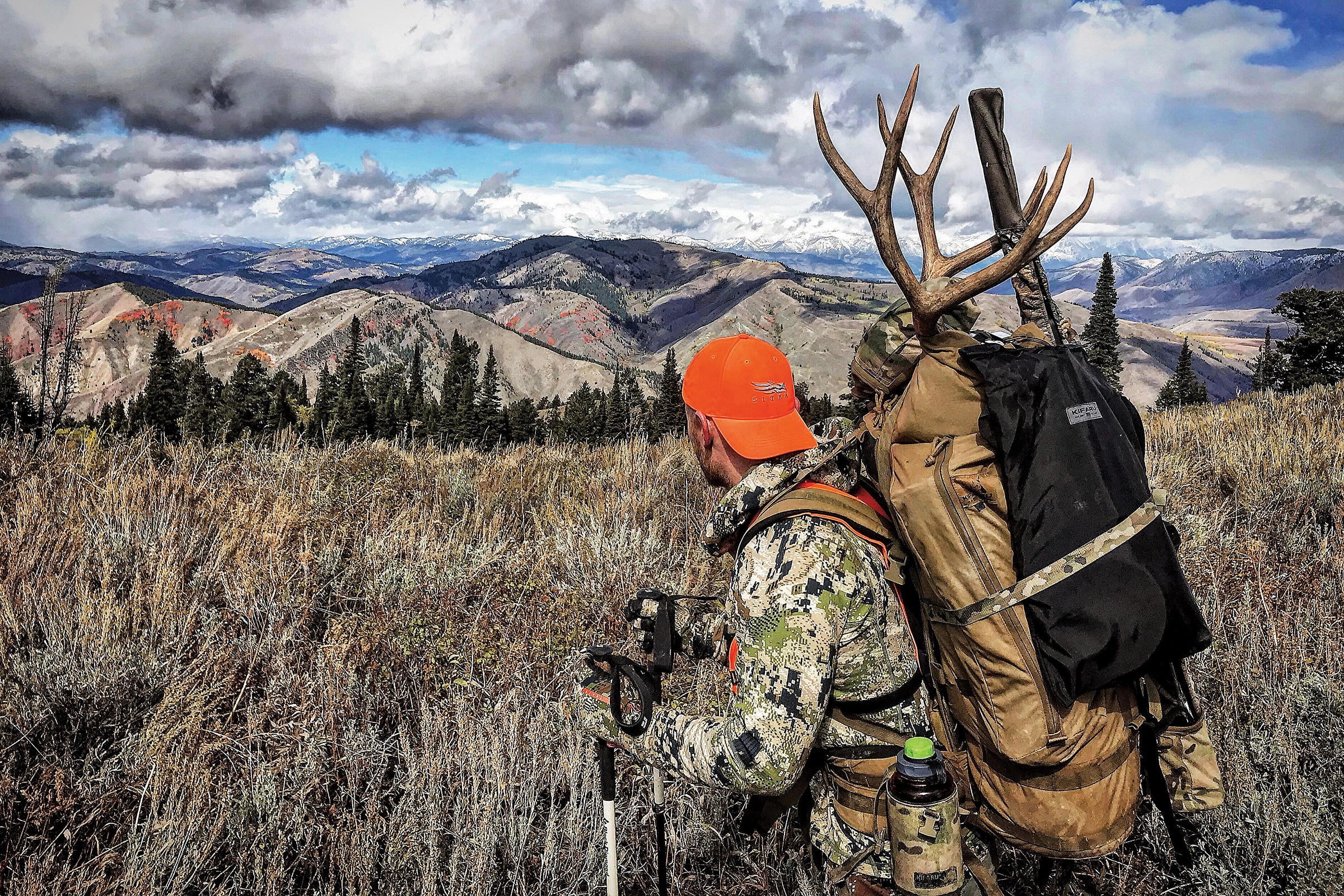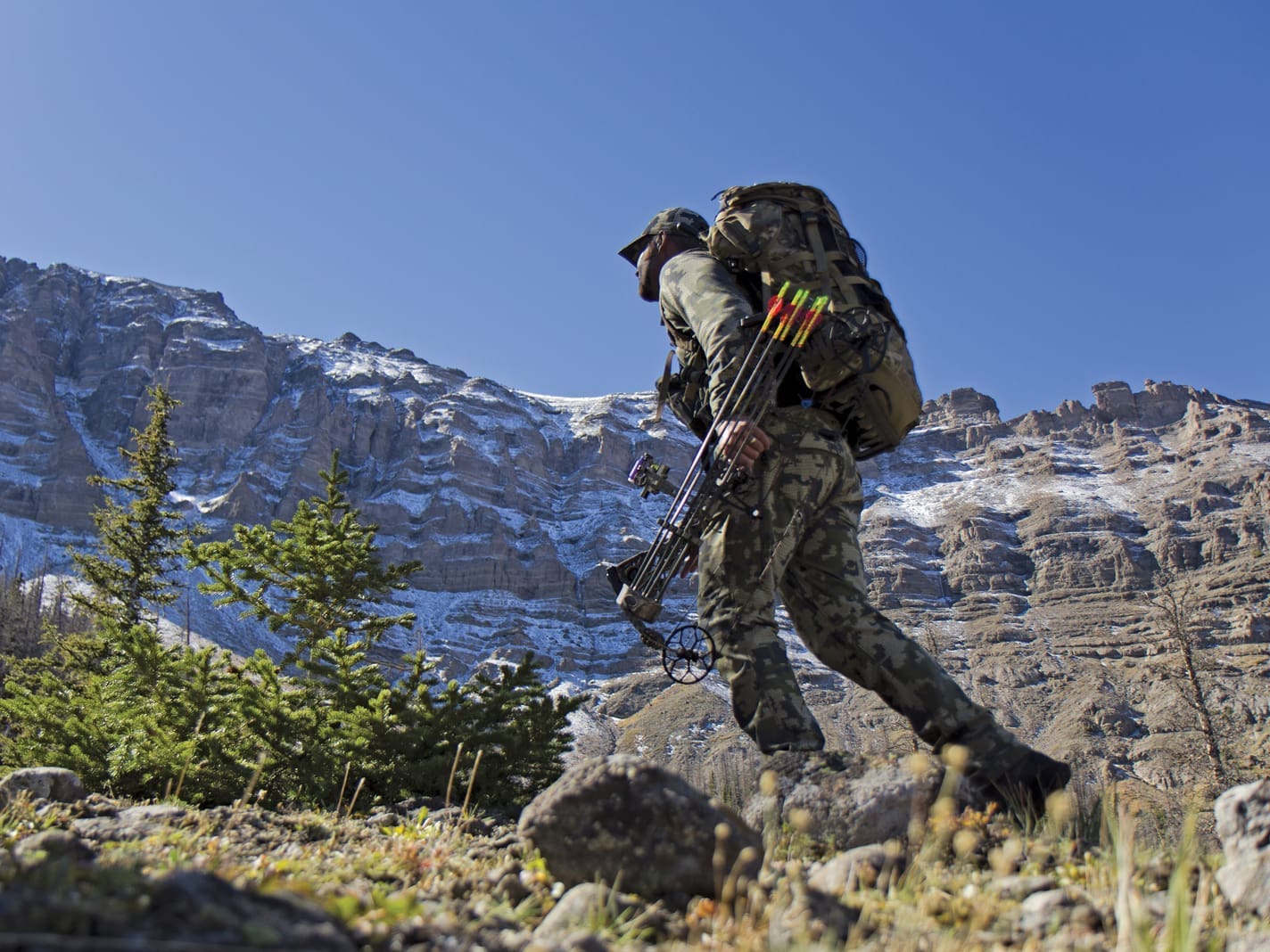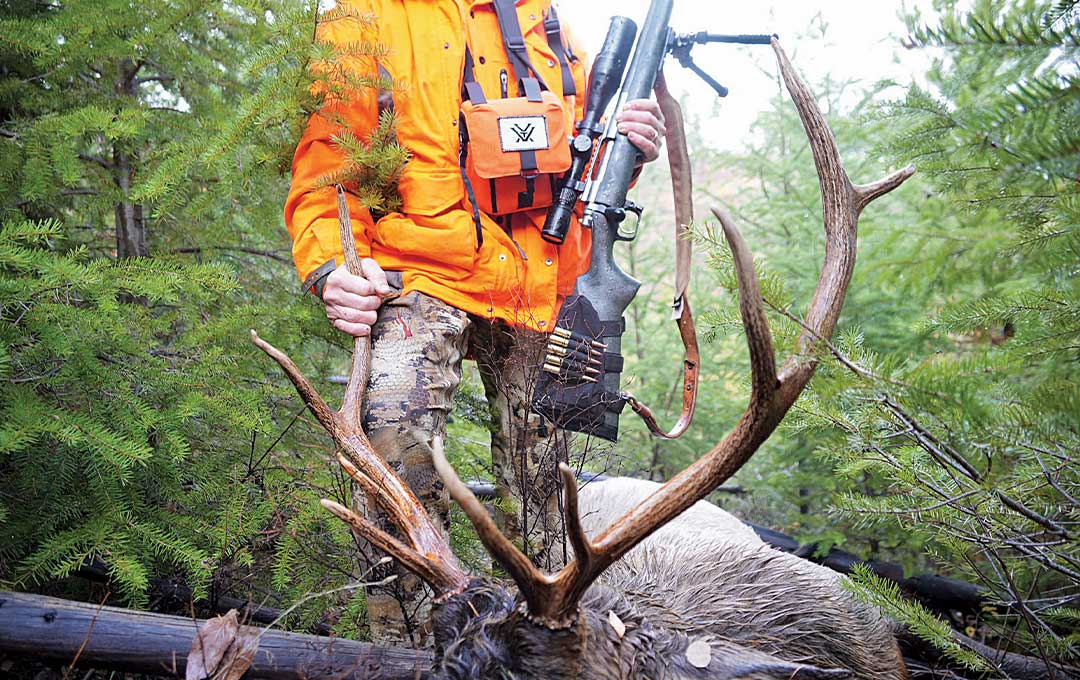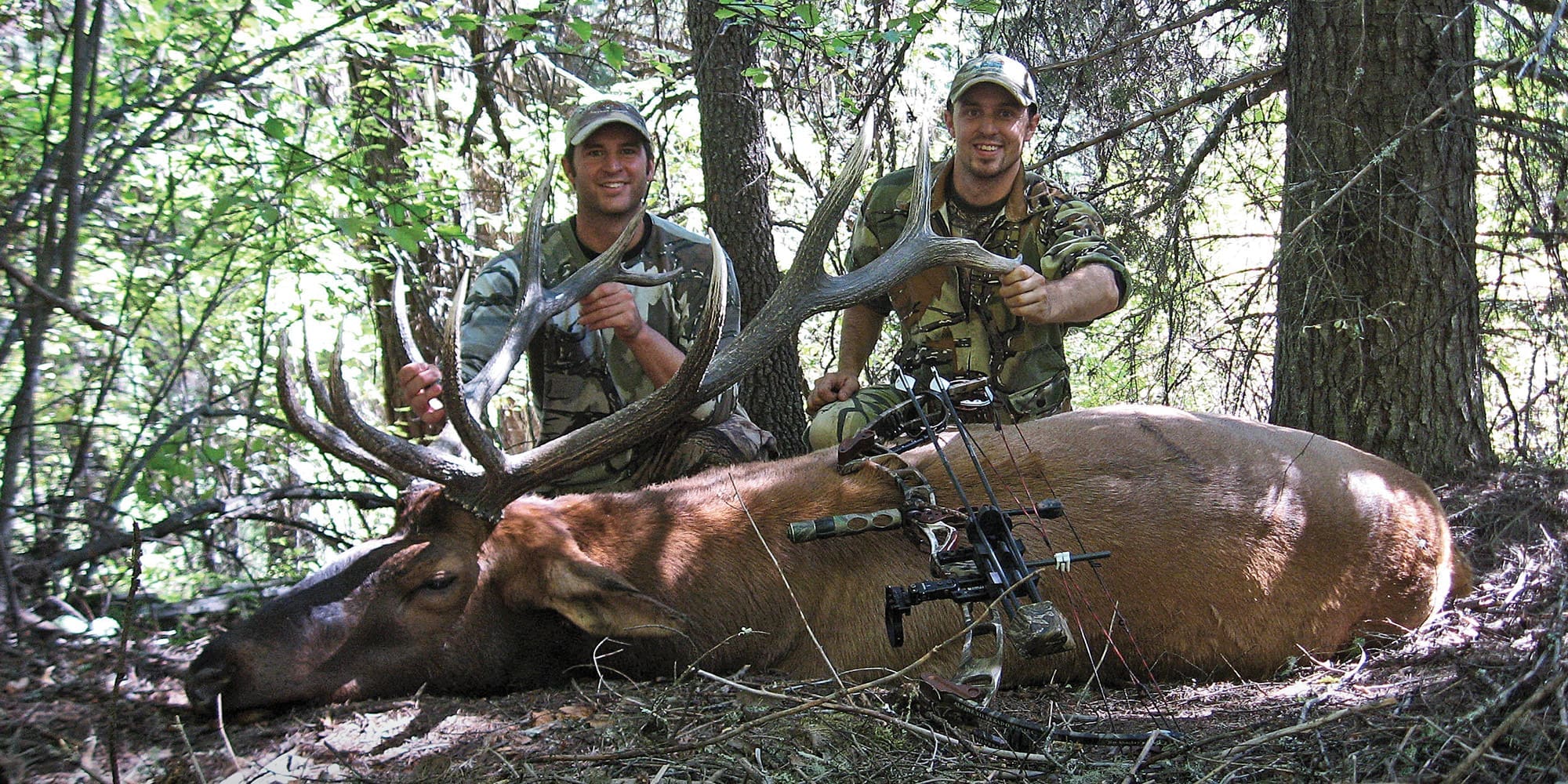
NOTICE: Certain links on this post may earn a commission for Western Hunter Magazine from Amazon or our other affiliate partners when you make a purchase. Thank you for your support.
Finding Mortally Wounded Game
The black was turning to grey under the trees, and things were slowly starting to materialize around me. When I looked up, I could tell daylight was emerging above the thick canopy. I quickly snapped my jacket onto my pack and shouldered it as I picked up my bow. My brother stood ahead of me, impatiently waiting for us to continue our climb to the ridgetop.
It was my first hunt of the 2009 archery elk season. I had just returned home from baseball for the year, and after a few days of shooting my bow, I was feeling confident enough to go hunt. My brother had already been hunting for a week or so and had already had a close encounter with a good bull in the area.
We crested the ridgetop shortly after daylight and started working our way up a trail towards the top of the mountain. My brother stopped to bugle from a knob where we often tried to locate bulls. Off to the west, we heard one answer us and we started to work in his direction. We had barely gotten set up when I heard him coming through a brush field. He walked out broadside at 40 yards, looking for us, and gave me a perfect shot opportunity. I could see that he was a clean five-by-five and decided to pass on the shot. Something didn’t feel right, and after all, it was the first hour of my elk season.
Straightforward Shot
As we continued up the main ridge, we bumped into a small group of cows that were still out feeding. They scattered in all directions, and after the woods went quiet, my brother bugled again. Another bull answered him, off to the east this time. We were sandwiched between two bull elk with a herd of cows all around us. Not a bad place to be on the first hunt of the year. We crept down a nice ridge covered with mature timber. Below us lay a deep canyon with a thick forest floor. The thermals were gently rising up the ridge, but we knew if we dropped too far down into the canyon, they would surely change in the bull’s favor.
I positioned myself on the ridge with a small draw to my left. My brother fell back behind me and started calling. The bull’s bugle sounded impressive, and the canyon below amplified the noise as he came closer to us. Pretty soon I could see yellow hide materialize through the trees. As he approached, I could see that his rack lay back differently than the other bull, and I was certain he was a six-point.
He worked up the draw to the left of me, and I drew my bow as he passed behind some trees. When he emerged, he was 33 yards to my left. I mewed with my voice, and he stopped, looking across the draw in my direction. My arrow disappeared behind his front shoulder, and I stood watching quietly as his yellow hide faded away through the trees.
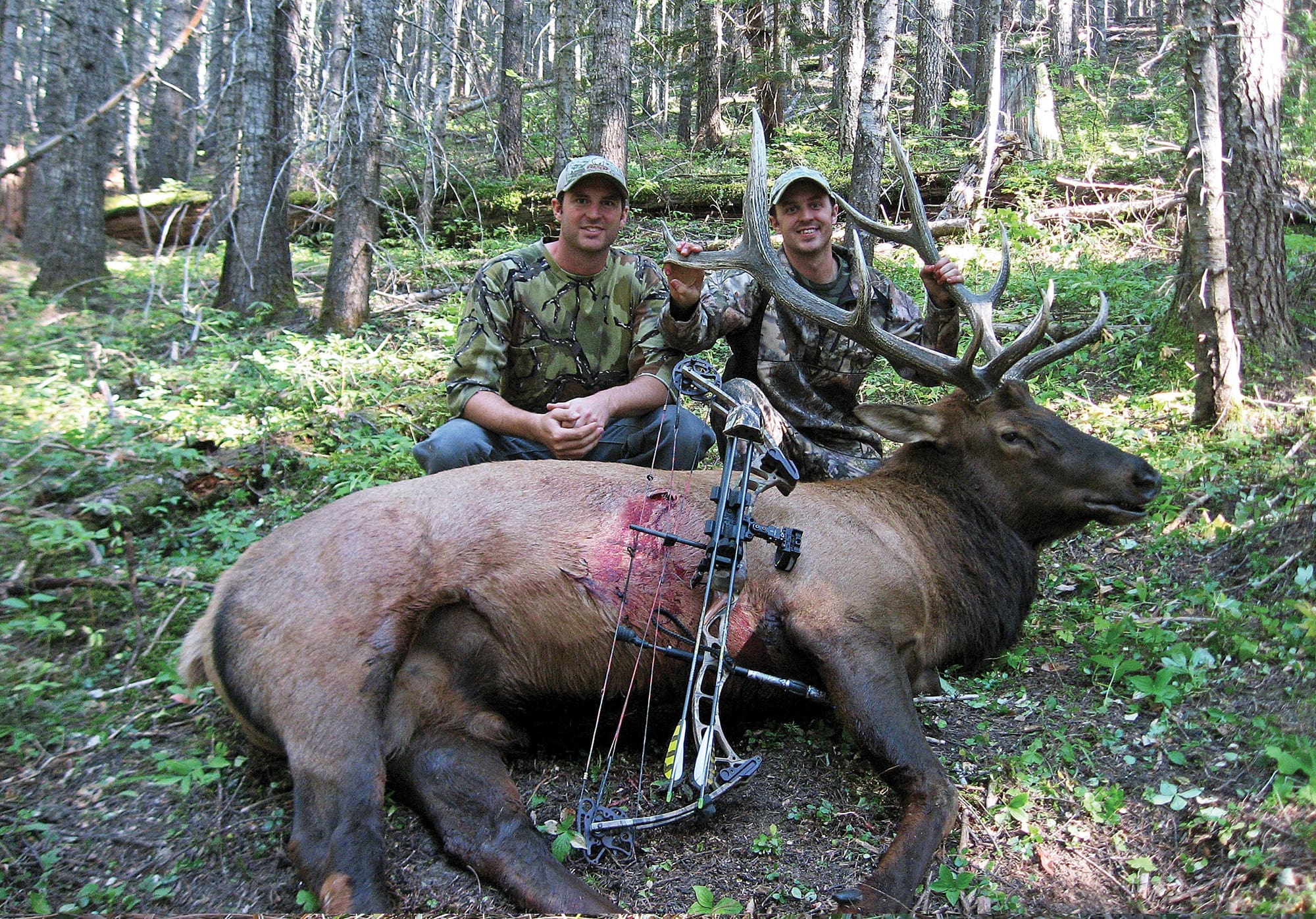
Search Party
Five hours later, my brother and I were frustrated and second-guessing everything that had happened. I was certain that my arrow had impacted the elk in the bottom third of the body, tight to the shoulder blade. My white fletchings had disappeared into the elk, but we had never found the arrow. In the hours that had passed, we had only found one drop of blood the size of a pencil eraser.
We had tried everything in our blood trailing process, but nothing was working. For the last two hours, we had been walking grids, keeping each other in view as we combed through the timber and underbrush. The underbrush had gotten thicker, obscuring our vision as we got deeper into the canyon.
Positioning ourselves perpendicular to the bull's exit path, we walked parallel to each other, gridding from the bottom of the canyon back to the shot location. After meeting up and discussing the situation, we decided to continue our search up to the only spot of blood we had found. As we crested around the next little ridge, my brother looked up the hill and saw the bull lying dead underneath some thick brush.
All the feelings of despair turned into joy and relief. The bull had only gone 200 yards before dying in that brush patch. The brush and lack of a blood trail made him extremely hard to find, despite a lethal hit. The arrow had entered the left side of his body, puncturing both lungs. The entire arrow remained intact, working its way through his entire body cavity as he ran.
Eventually, the arrow had worked its way down the inside of his right rear leg, and the broadhead was under the hide, near the hock. There was one three-inch circle of dried blood at the entrance hole, and when we cut him open, his entire chest cavity was filled with blood. I can still remember my brother saying to me, “That’s why you never give up.”
In the Blood
Throughout my bowhunting career, I have had the opportunity to blood trail a surreal number of animals. Growing up where I did afforded me a lot of opportunities to hunt and many different species to pursue. Not only did I grow up around good hunting, but I learned from a lot of very good hunters as well. I developed a good skillset early in life and have had a lot of years to practice and perfect it. My family and friends are all passionate bowhunters, so even if I wasn’t hunting myself, I was being called to the woods to help with recovery.
I will be honest with you when I say that not all the animals I have blood trailed have been recovered. Despite being extremely ethical, I have been on a lot of unsuccessful blood trails. The losses are just as significant as the successes, and we can learn something from all of them. That’s part of being a bowhunter, and if you haven’t experienced it from time to time, then you probably haven’t bowhunted very much.
Over the years I have blood-trailed animals in a lot of different situations. It doesn’t matter if you’re hunting thick timber, open country, flat or steep terrain, they all have challenges. Most of my blood trailing experiences come from very steep areas with lots of underbrush and obstacles. I think this makes for extremely challenging recoveries and has led me to develop a certain process that I follow on every blood trail. My hope is that sharing my process will help hunters recover more animals.
After The Shot
Once you shoot an animal… Be quiet! The hunt is not over just because you let an arrow fly. Television has given people the misconception that they need to celebrate, dance, roll around on the ground, or blow every call they have available. This is not the case. This idea has caused a lot of hunters difficulty or the loss of an animal they would have otherwise found.
When I shoot an animal with my bow, I watch it run away while digesting as much information as I can about the arrow placement and the direction it took as it left. I stand motionless for at least five minutes, listening for anything. The animal may break something, cough on its own blood, or fall over. I have used each of these as a clue that has helped me locate a downed animal.
As a caller for someone elk hunting, do not come forward after the shot. Let the shooter digest what has happened and retreat to you once they are comfortable with the situation. If you want to discuss what just transpired, withdraw from the area to have that conversation. Otherwise, stay put and listen.
If I believe the animal has been hit through both lungs, I will wait one hour prior to taking up the blood trail. Unless the animal falls over in front of you, give them a full hour. I have seen multiple elk that were double-lunged with an arrow live longer than one hour. If the hit is marginal or has the potential for only one lung, I personally wait two hours before trying to recover the animal.
Over the past 20-plus years of bowhunting, I have seen animals shot with a plethora of different broadheads, arrows, and bows. The bottom line is that animals are tough, especially when dealing with females. For whatever reason, females seem to have a stronger will to survive. Some of the most epic blood trails I have been on involved females of various species.

Finding Mortally Wounded Game Blood Trail
When I take up a blood trail, I sneak to the location of the animal when it was shot. I immediately look for the arrow or a piece of the arrow that may give me some information about how much penetration the arrow got and hopefully some blood to analyze. If the arrow passed through the animal, I can usually find it, but if I can’t, I do not waste too much time searching for it. You should have a pretty good idea of whether the animal is still carrying the arrow or not and will likely find a piece of it along the blood trail.
While blood trailing, I treat it like I am stalking the animal. It can take some time for an animal to start bleeding, depending on where it was hit. Start by trying to track the animal in the direction it left, using your landmarks to help you. Move slowly, and look for any evidence you can find to make sure you are headed in the right direction. I look for tracks, dirt on top of brush, broken sticks or brush, and blood.
Once I find blood, I stop and mark it by tying a piece of flagging tape to something off the ground and near the blood. Continue to mark the trail in the same fashion so you can always see the last piece of tape. Move slowly, quietly, and be extremely careful not to damage or alter any sign.
As you look for blood, keep in mind which side the animal was hit on and how high the impact was. Use this to help you determine where you should be looking. You may see blood that is spraying out to the side of the animal or dripping underneath it. If the animal is hit above center, the blood will often leak out on the hair and drip making it difficult to find, despite a likely lethal hit. Look on the underside of small trees and brush the animal may have brushed up against as it ran away.
Shot Placement and Blood
Heart shots have catastrophic results. Most heart-shot animals fall over either in front of you or shortly after being shot. Blood trails typically resemble someone walking through the woods with a garden hose spraying blood. This is not an article on shot placement, but I do not recommend aiming for the heart on large game like elk. The risks involved with a shoulder or brisket shot are too high. I recommend aiming for both lungs just below the center of the body.
Blood coming from the lungs is usually bright red and may be accompanied by bubbles or coagulation that you can see or hear the animal cough up. It often squirts or sprays out the side of the animal or out of its mouth as they run. Shots that get both lungs are the best, but be cautious of a single-lung hit. Even animals that are shot when they appear to be perfectly broadside often only receive a single-lung hit.
When an animal looks in your direction, its body often bows, hiding the opposite lung behind the shoulder. As the arrow enters the body, it often deflects and misses the opposite lung. I can’t over-emphasize the importance of getting both lungs when shooting large game like elk with a bow.
The liver is primarily on the right side of the body, and blood coming from the liver is darker in color. It will typically drip or squirt in smaller amounts and can be difficult to follow. That being said, a direct liver hit is lethal. Give that animal extra time to die, and have faith that the animal will expire from a direct liver hit.
Animals that are hit behind the diaphragm often leave grit on an arrow along with blood that’s as dark or darker than a liver hit. Unless the arrow got lung or liver on the entrance or exit, it will be very difficult to find. Blood from “gut shots'' is hard to locate and usually pretty minimal. Do your due diligence and give a gut shot animal plenty of time to bed down and expire before taking up the blood trail.
Losing the Blood Trail
- The VEER
Even on successful recoveries, you will often lose the blood trail for some period of time. In these situations, keep your cool and use your head. Don’t become frantic and start traipsing all over the place. If I go a fair distance without finding blood, I retreat to the last spot I located blood and mark it with flagging tape. From this point, I look ahead at the options the animal had. Sometimes this is a subtle veer in the trail or path that they are on.
Keep in mind that the animal is likely dying and is in the middle of a frantic death march. In a state of panic, they may veer off the obvious path in hopes of finding security in thick cover. I start by walking all possible “veers'' for approximately 20 yards, looking for blood or evidence that I am on the right path. Sometimes it helps to retreat and look at the flagging tape path and get a bigger picture of the line the animal was on prior to blood loss.
- The 180
When I cannot locate the blood trail by taking veers, I stop and do a 180-degree turn. I start looking for the animal to double back or go 90 degrees to the sides. Most of the time when this happens, the animal is close to death and they do something radically different–often plowing through a wall of brush that doesn’t make sense or actually rolling. The brush they crashed through often stands back up, blocking the obvious trail. I have seen this happen with both elk and bears in steep, thick terrain. - Doing Circles
If I still cannot locate the blood trail, I will start doing circles, moving outward from the last spot of blood. These circles often reveal a severe change in the path of the animal. I will perform three to four circles from the last known spot of blood. Circles have probably helped me locate more lost blood trails than any other method, especially when dealing with game that is rolling. They also help you locate an out track when hunting hounds…(Wink, wink.) - Splitting Up
This has really paid off for me in time-sensitive recoveries. When darkness is upon you, or you are dealing with high temperatures of early season hunting, splitting up can save you time. When you lose on a blood trail and have not been able to locate anything, have one person keep looking for blood, and send your hunting partner out in front of you to walk obvious travel routes, looking for either sign or the animal itself. Sometimes it appears as though you have lost the blood when the trail is obvious over the next ridge. On more than one occasion this has saved me time and helped me locate seemingly lost blood trails. - Grids
Walking grids is a last resort, but has helped me locate several animals that would not have been found by following blood. The “grids” I’m referring to are large parallel lines perpendicular to the direction the animal was headed. These lines may be several hundred yards long, working back and forth so I can see the last line that I walked. The distance between the lines depends on how dense the timber and underbrush are in that area. Using a GPS that stores your tracks helps you see what areas you have covered and any holes you may have in your grid.
Conclusion
This process is not for the easy blood trails that you can follow at a steady walk. It's for when things get difficult and you start to second-guess yourself. If you think you have mortally hit an animal, never give up when trying to recover it. Give the animal the respect it deserves. Again, I cannot stress enough the importance of getting both lungs on large game like elk. When you get that shot opportunity, resist the temptation to let that arrow go until you are certain you will kill the animal.
My brother and I have pulled off some unreal recoveries over the years. I can tell you story after story about finding animals using the above methods. Most of the tough ones are the products of single-lung hits. Hopefully, when the blood runs out, I’ve given you something to fall back on. Bowhunting has been such a large part of my life, and I hope that this article helps people recover animals for years to come. Use every blood trail as an opportunity to learn something, and never give up on an animal you have mortally hit.


